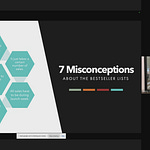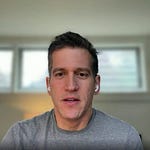Katy Milkman has built a career at the intersection of rigorous science and real-world impact. She’s a Wharton professor, co-director of the Behavior Change for Good Initiative, and one of Thinkers50’s top management thinkers. Her research explores how psychology and economics can help people save more, exercise consistently, and overcome bias, and her work has been featured everywhere from Nature to the New York Times. She also hosts the popular behavioral economics podcast Choiceology and has advised organizations ranging from the White House to Google.
And, of course, she’s the bestselling author of How to Change: The Science of Getting from Where You Are to Where You Want to Be. Named one of the year’s best books by the New York Times and an official Next Big Idea Club selection, her book didn’t just reach a wide audience; it reshaped Katy’s career, pulling her into new research partnerships, media opportunities, and policy conversations.
For Author Insider readers—especially those with academic backgrounds—her path from scholar to trade author offers both inspiration and practical guidance. If you’ve ever wondered how to turn your research into a trade book, read on for Katy’s biggest lessons.
(Editor’s note: some quotes have been lightly edited for clarity and concision.)
1. Don’t rush your book
It’s tempting to dive into a trade project the moment you get tenure or see colleagues signing deals. Katy resisted that pull. She spent years experimenting—writing op-eds, talking to agents, and listening to colleagues who’d published books—before her central idea crystallized.
“I think it’s good to wait until you’re like, I know what it is and I have to write it. I’m really grateful I didn’t try to jump too early.”
That patience paid off. When she finally sat down to write, she had a clear theme, a ready audience, and the energy to sustain the project. The right book is the one you feel compelled to write.
2. Tap your network for an agent
Katy didn’t scour websites or cold-pitch dozens of agents. Instead, she leaned on her academic and author circles. Recommendations from Adam Grant, Angela Duckworth, and Dolly Chugh led her to conversations with half a dozen agents, one of whom became her match.
“I think I’ve made, I don’t know, probably a hundred introductions to agents at this point… agents are like real estate agents, they’re always happy to have more introductions, and they can always say no.”
Introductions compound. Even if your network is thin, start with one or two authors and ask them for agent recommendations. Don’t know any published authors? Check out the acknowledgments pages of your favorite books and find the agents who are thanked, and reach out to them.
3. Add stories to the science
If you’re an academic, your default mode is experiment → data → finding. But a trade audience doesn’t want 250 pages of regression tables. Katy made her book come alive with case studies, anecdotes, and high-stakes situations where the science mattered.
Listen to this episode with a 7-day free trial
Subscribe to Author Insider to listen to this post and get 7 days of free access to the full post archives.









